A reed roof is both old and new, traditional and modern. Although reed is a seemingly handy material that has been used since ancient times for roofing houses, it is now a not so cheap material, mainly used by owners of old houses or those who want a house with a special look. Such houses can be found in selected areas of the Netherlands, Germany, Belgium, Belgium, France or England and their numbers are increasing every year. The reed roof is no longer a relic of the past either. Houses, gazebo and even umbrellas in exclusive seaside resorts are covered with reeds. Let's find out more about the reed roof, especially as aesthetics aren't its only advantage.
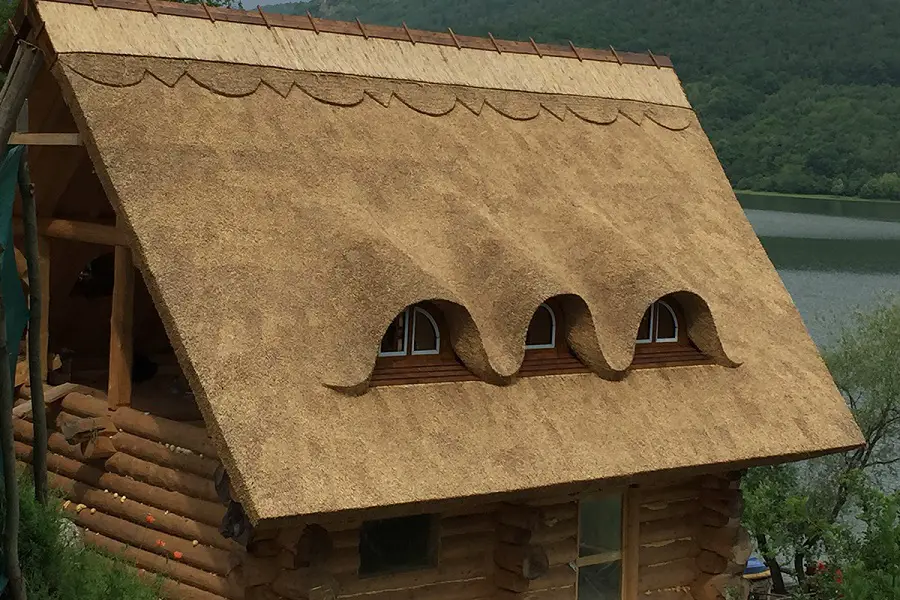
Covering houses with reeds
Covering houses with overlapping plants that keep water out is a common method worldwide. From straw to palm fronds, people have always found something handy to cover their houses to protect them from bad weather, storms or temperature variations.
The traditional reed roofing is specific to areas where reed is a common plant, i.e. marshy areas with a lot of water. Just as in forested areas the traditional houses were made of wood, in areas such as the Danube meadow, the Danube Delta, and even in parts of Transylvania, the roof was made of reed.
In my grandparents' village - 60 kilometers from Bucharest, on the banks of the Ialomița river - the reed roof was a sign of poverty. In the marshy area that formed on the lower bank of the river, there was plenty of reed. So all you had to do was cut it down and cut it into thatch and cover the house. I remember my grandmother's grandparents' neighbors had a little house like that covered with reeds. They were a poor family with three children. The house had a "tenement and a room" as they say in the area, meaning an entrance hall and a room. The stucco on the house was yet another sign of the hard life they led.
But now a reed roof puts you in a whole new zone. After a period when it was forgotten, reed is making a comeback like many other natural materials as people rediscover its virtues. And just like other natural materials, its value has risen sharply, now a sign of affluence. As well as old, restored houses, more and more of these are appearing in England, the Netherlands and Germany. The special appearance, both inside and out (when chosen not to be covered with other materials), as well as its excellent insulating properties, make reed a highly prized material.
What is reed
But first let's see what reed is. It is an herbaceous perennial herb (in Latin Phrogmites Australis) also called reed or water cane. Its preferred growing site is marshy land, along lakes, pools or slow-moving rivers. The Danube Delta is a very good site for reed, with up to 1500 km² covered. Here the surface roots of the reeds intertwine with those of other plants, forming patches that sometimes detach from the bottom of pools to form islands.
The stem grows up to 2-3 m and in exceptional cases can even reach 4-5 m. The mature stem is tough, elastic, with a slight wax-like surface sheen. This allows water to run off easily, preventing puddling and seepage.
Reed is harvested in winter when it is dry. The harvesting period begins in mid-November and ends in mid-March. Harvesting is both manual and mechanized. To protect the land (as is the case in the Danube Delta), machinery is often dispensed with and harvesting is done by hand. It is very hard work, with people often standing with their feet in cold water. But for the people of the delta this work is often their only source of income. Danube Delta reed is almost entirely exported to European countries (Germany, the Netherlands, Denmark).
Reed is used as a building material (roofing, fencing), as a base for making paper, biomass, for weaving or as animal fodder. In the past, reed from the Danube Delta was intensively exploited for paper. In Romania, reed is no longer used to make paper.
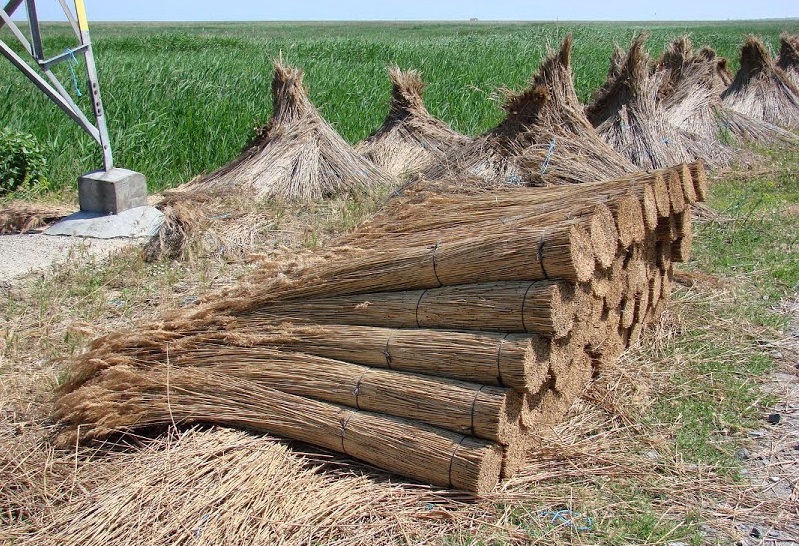
photo source: cycling.ro
Advantages of a reed roof
Reed is considered one of the oldest and best materials for roofing houses. A reed roof does not need thermal insulationThe reed itself acts as an insulator. At a thickness of 28-30 cm, the heat transfer coefficient is 0.31. If you compare it with other insulating materials you will discover a very good insulating material.
Hive is also a very good sound insulator. Its structure makes the noise of rain or hail noise disappear and living under such a roof is quiet and pleasant.
Although many people say that this roof is very sensitive to fire, it turns out it's not. The way it's mounted makes it very dense which greatly slows the spread of fire. Such material burns hot and often, for lack of air, the fire goes out. Experts say that the roof resembles a thick book. Although each page burns very easily, the closed book is very difficult to burn.
The reed roof not sensitive to frost, hail, snow or storms. It doesn't storm like in Cethe 3 little pigs because the fastening is made directly to the roof joists, so it becomes a joint with the house.
No need for guttering, grommets or other such arrangements for collecting water.
It is a material environmentally friendly and cost-effective. Although it is more expensive than the other materials used to cover the house (tiles, sheet metal, bituminized carpet), its high resistance over time, the savings made in insulating the roof and lower energy costs mean that the investment pays for itself in a short time.
It is very resistant over time. If it is well installed and the pitch of the roof over 45º, such a roof lasts at least 45-50 years. It is recommended to refresh every 15-20 years because it will stain, but you don't have to change and put new ones on, as is the case with other types of coverings.
How to install a reed roof
Reed roofing must be installed by specialists to be effective. It can be fitted to any type of house, new or old, regardless of design, provided the slope is at least 45º. To fit the roof, narrow planks are tapped into the roof frame. Not as for another roof under the roof but only to support the reed.
The reed used must be healthy, free of rot or mold and must not be mixed with other plants. Use mature plants so that the stems are strong, straight and flexible. Stem height should be between 1.4 and 1.8-2 m. Reed is bought in the form of sheaths which are also called mallows. To cover 1 meter you need 8 bundles.
Assembly starts at the base of the roof, with the thicker part of the rod at the base. Put the sheathing on all the lengths, undo and press. Pressing is done with a wooden rule, perpendicular to the length of the reed. The rod is fastened to the rafters with wire. After pressing, the reed is beaten from the bottom to the top with a tool called a comb or a mallet until it is even. It is then sewn together with beam wire. The second layer will have the transverse wooden rafter as the base. Follow the same procedure to the top. There the battens are placed along the ridge so that there is no possibility of water penetration. At the end, the wooden battens are removed and the final finishing is done to give a uniform appearance.
At first, the color of the reed is a mixture of yellow, orange and brown, the natural color of the reed. Over time, due to the sun's rays, it first begins to turn a dark gray, then dark brown to black, with a chalky appearance.
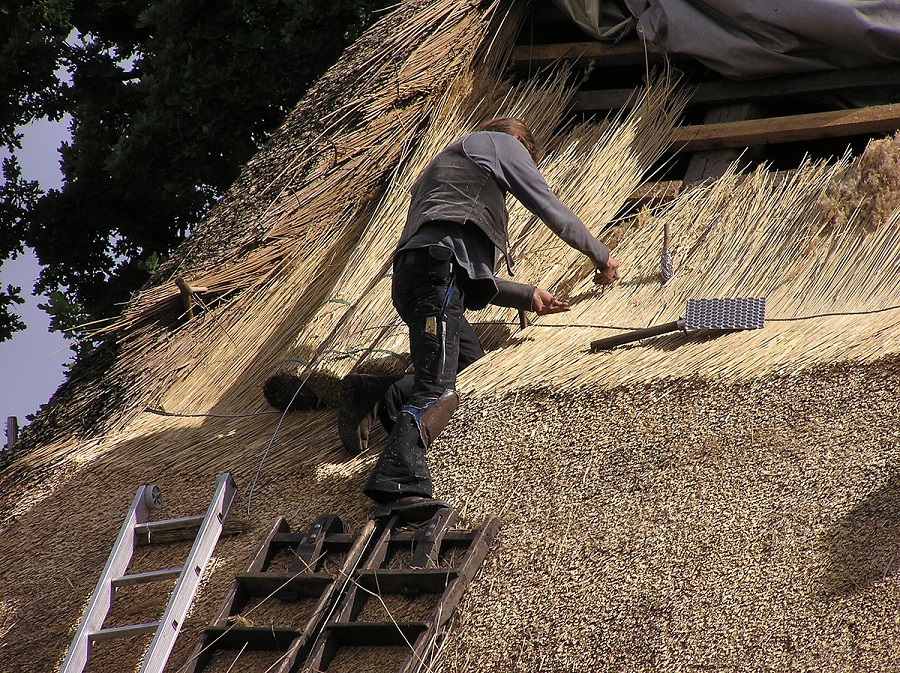
Requirements for maximum results
To be effective, a reed roof should be 28-30 cm thick and the slope should be at least 45º. In this way water does not penetrate and drains downwards, being directed by the canes.
The life expectancy of the roof also depends on the slope. Experts have shown that at a slope of 25º, the life expectancy is up to 25 years, at 30º, 15-20 years and above 45º, 45 years and more.
The quality of the material should be very good. The fewer chemical treatments, the more resistant the plant is over time. The material must be well dried to prevent mold.
The design of the roof and how the covering is made are important. The roof tiles should be placed so that they do not collect too much water on one side of the roof and too little on the other. Water should be directed so that it runs off the roof as evenly as possible.
There should be no edges to keep water out. Where there is a ridge (the ridge of the house), the sheathing is laid along the ridge, and the ridge between the water and the ridge of the dormer windows (attic windows) is covered rounded.
Weather resistance also depends on the positioning of the house and how exposed it is to the elements or other vicissitudes of the weather.
There are downsides
The main disadvantage seems to be the price. Such a roof can be 3-4 times more expensive than a tile roof, which is not cheap either.
Birds foraging for all sorts of insects among the reeds or nesting can be a disadvantage again. It's not the mess they can make but real damage.
Sometimes it can be difficult to secure such a house. Some companies dispute the fire resistance. However, companies that install thatched roofs have proved the strength of their work and have certificates to prove it. That's why it's a good idea to work with such companies if you decide on a reed roof.
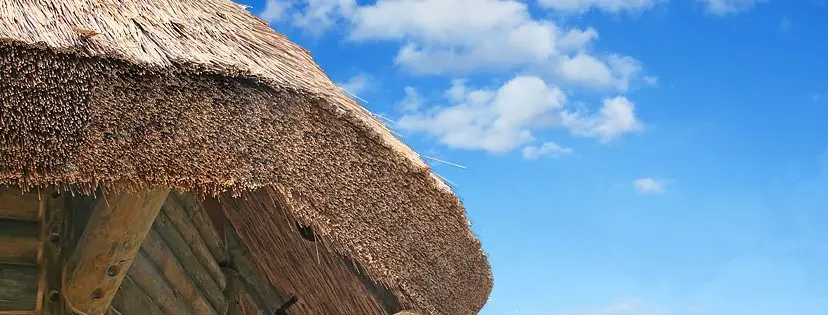
I hope you have learned something new today by reading this article. If you find it interesting for others, feel free to share it. If you have any questions, additions or comments, you can leave them below in the dedicated space.



























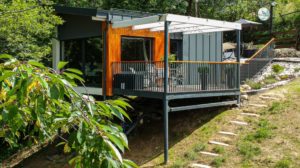


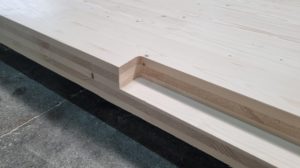
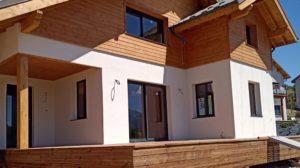




Good evening.
Can you recommend a craftsman to take care of the roof of a house located near Bucharest?
It is a ground area of 50m3.
Thank you.